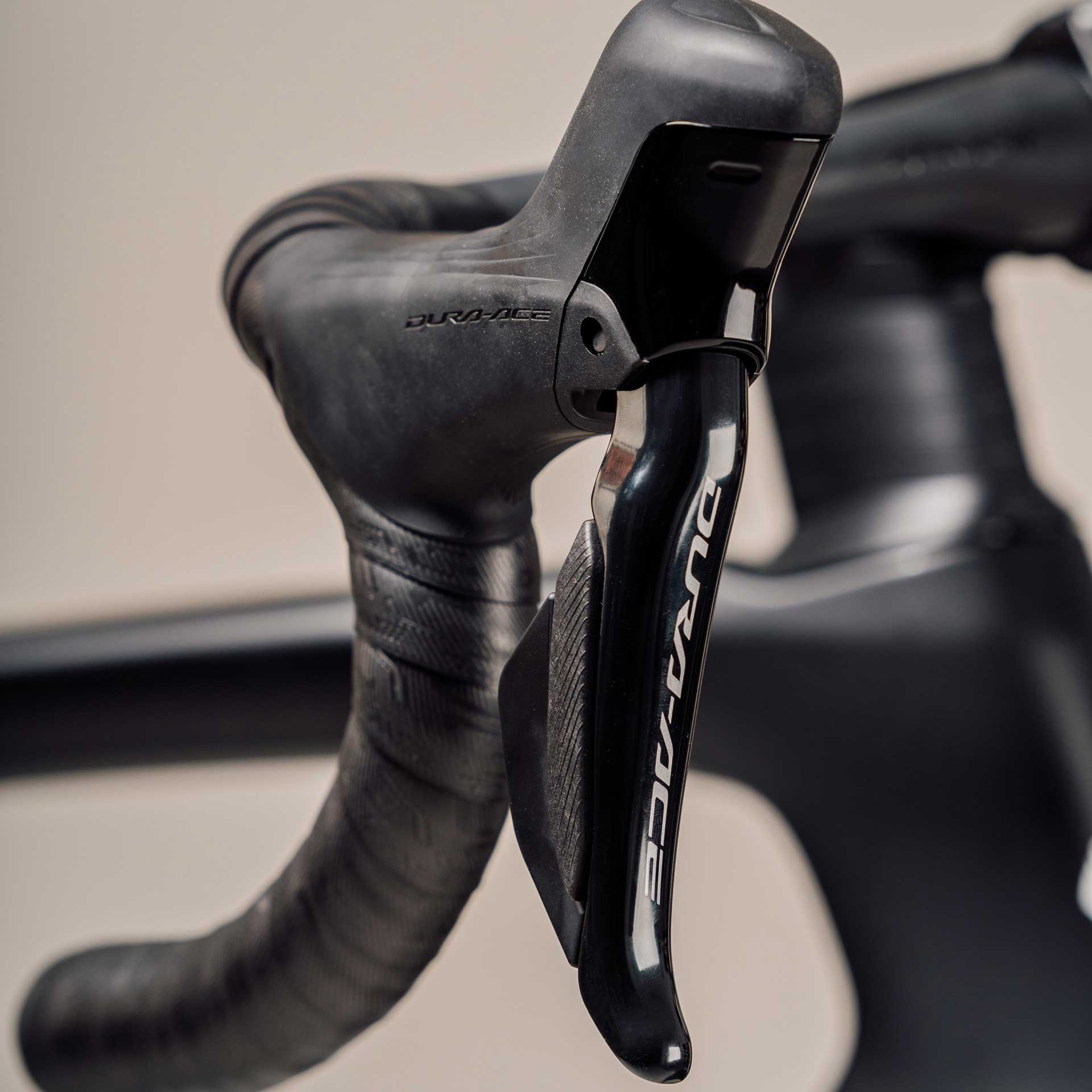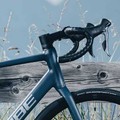Shimano is one of the most well-known and reputable brands when it comes to components and their groupsets grace every kind of bike, from entry-level to pro peloton steeds. Their road range provides both mechanical and electronic options and a wide range of choices depending on budget and rider requirements.
Here's what we'll cover:
- What a road bike groupset is
- Shimano groupset hierarchy
- What are the differences between the Shimano groupsets
- How you change gears using Shimano
What is a road bike groupset?
The term road bike groupset usually refers to the cassette, chainset, chain, front derailleur, rear derailleur, brake/shift levers and the brake calipers (be they disc brake or rim brake). Although Shimano makes wheels and pedals which it names in line with the relevant groupset, these aren’t generally thought of as part of the groupset and won’t be discussed here.
The following components make up a road bike groupset:
- Cranks - The arms which connect the pedals to the bike
- Chainrings - The toothed sprocket(s) attached to the cranks
- Chainset - The collective phrase used to describe the cranks and chainrings as a whole
- Chain - Metal links in a loop that connect the chainrings to the cassette
- Cassette - The collection of sprockets attached to the rear wheel which drive the bike
- Front derailleur - The device which moves the chain onto a different chainring (if fitted)
- Rear derailleur - The device which moves the chain onto a different cassette sprocket
- Shifter - Lever or mechanism which operates the front or rear derailleur



Shimano Groupset Hierarchy
Shimano’s road groupset range has a naming convention that isn’t particularly logical, so in order of the most to least expensive, here is their current range:
- Dura-Ace Di2 electronic 12-speed
- Ultegra Di2 electronic 12-speed
- 105 Di2 electronic 12-speed
- Ultegra mechanical 11-speed
- 105 mechanical 11-speed
- Tiagra mechanical 10-speed
- Sora mechanical 9-speed
The groupsets are available disc or rim brakes, although in practice virtually every new mid-range and top-end road bike is fitted with hydraulic disc brakes. Every two or three years, each groupset gets a redesign and upgrade; traditionally Shimano has kept the same name for each level in the hierarchy but increased the code number associated with that range. So for example, Dura-Ace Di2 9100 was followed by Dura-Ace Di2 9200.
What are the differences between the Shimano groupsets?
Even the least expensive of Shimano’s groupsets works superbly, with assured braking and reliable, easy-to-operate shifting so it is a very valid question to wonder why there is any need to pay more.
At the top end, the Dura-Ace Di2, Ultegra Di2 and 105 Di2 offer effortless electronic shifting and cassettes with 12-sprockets whilst the remainder of the range has mechanical shifting with 11, 10 and 9-speed cassettes as the price gets lower.
Beyond these obvious differences, the groupset weight also reduces as the cost rises, with more exotic materials such as carbon and titanium replacing steel and aluminium and designs that are more refined for nicer ergonomics as well as further weight saving. There is often more adjustability and easier serviceability on offer with the more expensive options too, so parts can be tuned or maintained rather than just needing replacing when they are worn out.

How do I change gears using Shimano?
Changing gears using the electronic system is very similar to changing gears mechanically in terms of how the chain moves across the sprockets. The only difference is the source of power that moves the derailleur; electricity instead of muscle. Both systems still use sprockets, a chain and derailleurs, and even the design of the electronic shifters closely mimics that of the mechanical shifters, except that there are two levers/buttons behind the brake lever as the brake lever itself is no longer involved with changing gear. Holding either of these levers on the right-hand shifter continues the movement of the rear derailleur, so it shifts multiple gears at once.

Mix and Match
It is worth bearing in mind that within the Shimano ecosystem, parts can be mixed and matched across the various ranges as long as the ‘speed’ and the mechanical/electronic element is the same. So a 12-speed Dura-Ace cassette can be used with 105 Di2 shifters and derailleurs and vice versa.
Find Dura-Ace, Ultegra and 105 in our components section.






